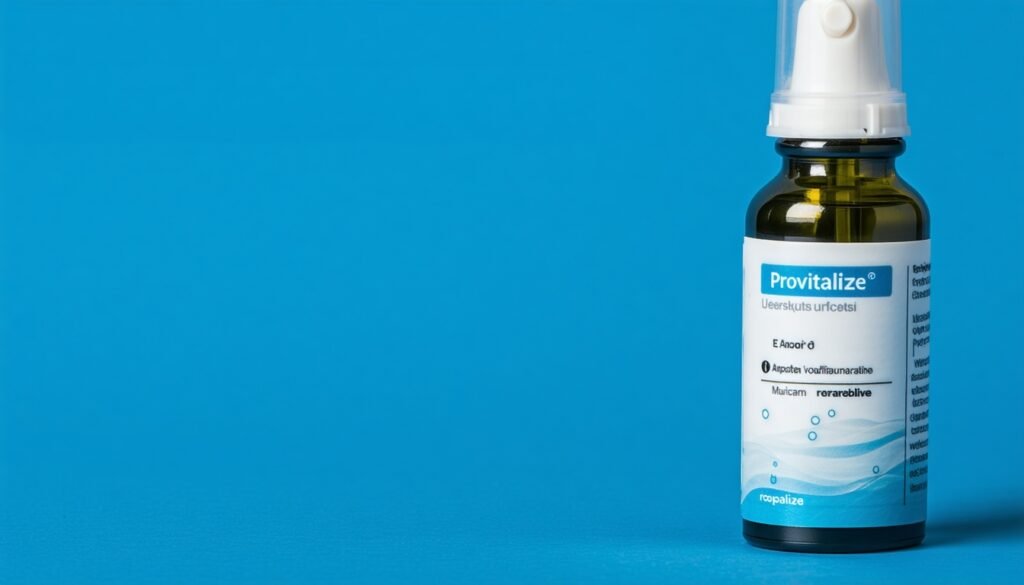Understanding Melatonin
What is Melatonin?
Melatonin is like the night owl of hormones produced by the pineal gland in your noggin. It’s the body’s way of saying, “Hey, it’s bedtime!” This hormone kicks in when the sun goes down, helping to regulate your sleep-wake cycle (Timeshifter). Think of it as your internal lullaby, nudging you towards dreamland.
You can snag melatonin in supplement form, usually a lab-made version of the hormone. These little helpers are popular for tackling sleep troubles and adjusting to new time zones, making them a lifesaver for folks battling jet lag.
Role of Melatonin in Sleep
Melatonin is the maestro of your circadian rhythm, the body’s internal clock that decides when you should be snoozing or wide awake. Light exposure is its cue; it ramps in the evening as darkness falls and chills out in the morning when the sun rises. This rhythm keeps your sleep-wake cycle in sync with the natural day-night pattern.
For those whose internal clocks are out of whack, like jet-lagged travelers, melatonin can be a game-changer. Popping a melatonin supplement can help reset your body’s clock to match your new time zone faster.
| Time of Day | Melatonin Levels |
|---|---|
| Morning | Low |
| Afternoon | Low |
| Evening | High |
| Night | Highest |
Are you curious about how melatonin can tackle sleep disorders? Check out our articles on melatonin for insomnia and melatonin dosage for sleep.
Getting the scoop on melatonin’s role in sleep can help folks make smart choices about using supplements to handle sleep hiccups and jet lag. If you’re wondering about any side effects, our article on melatonin side effects has got the lowdown.
Melatonin for Jet Lag
Benefits of Melatonin for Jet Lag
Melatonin, that little hormone your body makes, is like your internal bedtime storyteller. It helps you nod off and wake up at the correct times. For those hopping across time zones, melatonin can be a trusty sidekick in the battle against jet lag. Jet lag is annoying when your body clock is all mixed up with the local time, making you feel like a zombie with a foggy brain.
Studies show melatonin is good at keeping jet lag at bay, especially when flying over five or more time zones. Taking melatonin near bedtime at your destination tells your body, “Hey, it’s sleep time!” This can help you drift off quicker and sleep like a baby.
| Benefit | Description |
|---|---|
| Reduces Jet Lag | Helps sync your body clock with local time. |
| Improves Sleep Quality | Makes it easier to fall and stay asleep. |
| Decreases Fatigue | Cuts down on daytime drowsiness and boosts alertness. |
Recommended Dosage for Jet Lag
Getting the most out of melatonin for jet lag isn’t just about how much you take but when you take it. Research suggests doses between 0.5mg and 5mg work well, with the higher end (up to 5mg) helping you fall asleep faster and sleep better (NCBI). Going over 5mg? There’s not much extra bang for your buck.
| Dosage | Effectiveness |
|---|---|
| 0.5mg | Works well |
| 1mg | Works well |
| 3mg | Works well |
| 5mg | Works best |
| >5mg | No extra perks |
For best results, pop that melatonin pill close to your new bedtime, usually between 10 pm and midnight. This helps your body clock catch up with local time, easing those jet lag blues.
But beware! Taking melatonin at the wrong time, like in the morning, can make you sleepy and slow your adjustment to the new time zone (NCBI). So, plan your melatonin timing wisely to get the most out of it.
For more on how much melatonin to take and its effects, check out our article on melatonin dosage for sleep.
By learning about melatonin’s perks and the right doses for jet lag, travelers can make smart choices to enjoy their trips and sleep soundly. For more tips on using melatonin safely, visit our section on melatonin side effects.
Safety and Side Effects
Short-Term Safety of Melatonin
Melatonin supplements are usually safe and can be used as a quick fix. They help folks catch some Z’s and are often used for issues like delayed sleep phase disorder and sleep troubles in blind people. Plus, they can ease insomnia.
When you pop melatonin pills in the right amounts, they’re safe for most people. But, just like any sleep aid, it’s wise to use them with a doctor’s guidance. This way, you’re sure you’re doing it right and staying safe.
Potential Side Effects of Melatonin
Melatonin’s pretty chill, but it can throw a curveball for some. Here’s what might happen:
- Headache
- Dizziness
- Nausea
- Drowsiness
| Side Effect | Frequency |
|---|---|
| Headache | Common |
| Dizziness | Common |
| Nausea | Common |
| Drowsiness | Common |
Data from the Mayo Clinic
Feeling sleepy during the day is a biggie, so avoid driving or using machines for about five hours after taking it. If you have autoimmune issues, melatonin might not be your friend, as it could make things worse (Mayo Clinic).
Melatonin can also mess with some meds, so check with your healthcare provider before diving in, especially if you’ve got health stuff going on or are on other meds. For more scoops on side effects, click on our page on melatonin side effects.
Knowing the short-term safety and possible side effects of melatonin can help people decide if it’s the right treatment for jet lag and other sleep hiccups. For advice tailored to you, chat with a healthcare pro.
Melatonin for Sleep Disorders
Melatonin, that little hormone your body makes, is like your internal bedtime storyteller. It helps you nod off and stay snoozing. Folks often turn to melatonin supplements when sleep’s playing hard to get, like with insomnia or when your sleep schedule’s all out of whack.
Melatonin for Insomnia
Insomnia is that annoying guest who just won’t leave—making it challenging to fall asleep, stay asleep, or both. Melatonin can be your secret weapon against this pesky sleep thief. The Mayo Clinic gives melatonin a thumbs-up for short-term use, saying it helps you catch those Z’s without making you feel like a zombie the next day.
Melatonin whispers to your body, “Hey, it’s bedtime,” helping you drift off when you want to. If you’re struggling to hit the hay at a decent hour, try popping a melatonin pill about 30 minutes to an hour before you plan to snooze.
| Dosage | Effectiveness |
|---|---|
| 0.5 mg | Mild |
| 1-3 mg | Moderate |
| 5-10 mg | High |
Are you curious about how much melatonin you should take? Check out our article on the dosage of melatonin for sleep.
Melatonin for Delayed Sleep Phase Disorder
Delayed Sleep Phase Disorder (DSPD) is like having a night owl’s schedule in a world that runs on early bird time. Your sleep’s pushed back a few hours, making mornings a real struggle. Melatonin can help reset your internal clock, nudging you to sleep earlier.
The Mayo Clinic says melatonin can help shift your sleep schedule forward. Taking it in the evening can help you hit the sack sooner.
| Timing | Effectiveness |
|---|---|
| Evening (1-2 hours before desired sleep) | High |
| Night (at bedtime) | Moderate |
| Morning | Low |
Timing is everything when it comes to melatonin and your body clock. Want to know more about how melatonin works its magic on your sleep schedule? Head over to our article on melatonin and circadian rhythms.
Melatonin supplements can be a game-changer for tackling sleep issues like insomnia and DSPD. You can make the most of melatonin’s sleep-boosting powers by getting the dosage and timing just right. Curious about any side effects? We’ve got you covered in our article on melatonin side effects.
Melatonin and Circadian Rhythms
How Melatonin Affects Circadian Clock
Melatonin, the “hormone of darkness,” is like the body’s natural night owl, produced by the pineal gland in your noggin. It’s the unsung hero of your internal clock, keeping your sleep-wake cycles and other bodily functions in check. Think of it as your body’s timekeeper, ensuring you don’t snooze through life.
This hormone is a handy sidekick for those battling jet lag or adjusting to new time zones. While light is the heavyweight champ in shifting your circadian clock, melatonin is the scrappy underdog that can still make a difference.
Taking melatonin in the evening nudges your circadian clock forward, known as phase advance. On the flip side, popping it in the morning pushes your clock back, called phase delay. These shifts are like a reset button for your internal clock, helping you bounce back faster when hopping across time zones.
Timing of Melatonin Administration
Timing is everything when it comes to melatonin’s magic. The best time to take it depends on what you’re aiming for, your flight schedule, whether you’re a morning person or a night owl, and when you like to hit the hay. Tailored advice is your best bet based on your quirks and travel plans (Timeshifter).
A low-dose (1-3mg) fast-release melatonin is your go-to for jet lag warriors. Slow-release versions and higher doses might hang around too long, leaving your circadian clock scratching its head (Timeshifter).
| Timing of Administration | Effect on Circadian Clock |
|---|---|
| Evening | Phase Advance (shifts clock earlier) |
| Morning | Phase Delay (shifts clock later) |
Getting the timing right with melatonin can help travelers tweak their sleep schedules and curb jet lag. For more on melatonin dosage and safety, check out our articles on melatonin dosage for sleep and melatonin side effects.
Personalized Usage
Factors Influencing Melatonin Timing
Getting the timing right for melatonin is like finding the sweet spot for a perfect nap, especially when battling jet lag. Here’s what you need to know to make melatonin work its magic:
- Resetting Your Body Clock: The aim is to sync your internal clock with the new time zone. Pop that melatonin in the evening to speed up your sleep schedule or in the morning to slow it down.
- Flight Schedule: When you fly matters. If you’re landing in the evening, taking melatonin during the flight can help you hit the sack as soon as you arrive.
- Your Sleep Style: Are you a night owl or an early bird? Night owls might need melatonin earlier, while early birds can take it closer to their usual bedtime.
- Target Bedtime: Aim to take melatonin at the same time you want to hit the hay in your new time zone. It’s all about getting those Zs at the right time.
- Personal Preferences: Everyone has quirks. Some people like to stick to a routine, so take melatonin when it feels right for you.
Personalized Advice for Melatonin Use
With all these factors in play, getting personalized advice is the way to the best results. Here’s how to make melatonin your travel buddy:
- Chat with a Pro: Chat with a healthcare provider before popping melatonin, especially for jet lag. They’ll give you advice tailored to your health and needs.
- App Assistance: Apps like Timeshifter can be your guide, offering tips based on your flight, sleep style, and bedtime goals. They’ll help you determine the best time to take melatonin to beat jet lag.
- Go Low and Fast: To reset your body clock, take a low-dose (1-3mg) fast-release melatonin. Slow-release or high doses might last too long and mess with your sleep schedule.
- Practice Makes Perfect: Try a test run with melatonin before you travel to see how it affects you. This can help you tweak the timing and dosage for your trip. Check out our article on a trial run with melatonin before travel.
- Keep an Eye on It: Monitor how melatonin impacts your sleep and adjust as needed. If you notice any side effects, look at our guide on melatonin side effects.
By taking these steps and getting personalized advice, you can use melatonin to tackle jet lag and boost your sleep quality while traveling. For more on melatonin and its benefits, read our articles on melatonin dosage for sleep and anxiety.
Research Findings
Studies on Melatonin for Jet Lag
It turns out that melatonin might just be your new best friend when hopping across time zones. A bunch of studies have given it a thumbs-up for tackling jet lag. In 2002, a review of 10 studies found that melatonin worked wonders in 9 out of 10 cases, especially when folks took it near bedtime at their destination (Healthline).
Fast forward to 2014, and another review backed this up, showing that six out of eight trials with over 900 participants preferred melatonin over placebo for easing jet lag (Healthline).
A more recent review took a closer look at flights crossing five or more time zones. Eight out of ten trials showed melatonin’s magic in reducing jet lag. But here’s the kicker: slow-release melatonin at 2mg didn’t cut it. Seems like a higher peak concentration is the way to go (NCBI).
Effectiveness of Melatonin Dosages
Getting the correct dose and timing of melatonin is key to beating jet lag. Research suggests popping melatonin close to your target bedtime at the destination, usually between 10 pm and midnight, is the sweet spot. Doses from 0.5mg to 5mg do the trick, but going over 5mg doesn’t add any extra oomph (NCBI).
| Dosage (mg) | Effectiveness |
|---|---|
| 0.5 | Effective |
| 2 | Effective |
| 5 | Effective |
| >5 | No extra benefit |
Timing is everything, folks. Taking melatonin too early in the day can make you sleepy and mess with your body clock. Side effects are rare, but if you have epilepsy or are on warfarin, tread carefully.
Curious about melatonin’s side effects? Check out our article on melatonin side effects. And if you’re wondering how melatonin might affect anxiety, we’ve got you covered with our article on melatonin for anxiety.
By learning about these research findings and understanding the dosages, you can make smart choices about using melatonin to combat jet lag and enjoy your travels.
Precautions and Considerations
Thinking about using melatonin to tackle jet lag? Let’s chat about some things you should remember to ensure you’re using it safely and effectively.
Long-Term Safety of Melatonin
Melatonin is like a sleep fairy for short-term use, helping folks catch some Zs. It’s often the go-to for those with sleep phase hiccups or circadian rhythm issues, especially for those who are blind. It can also help with insomnia. But here’s the kicker: we don’t know what happens when you use it long-term. The science folks haven’t nailed down the long-term safety in those fancy randomized studies (Timeshifter).
When it comes to melatonin supplements, especially if you’re taking more than your body naturally makes, the jury’s still out on the side effects. Short-term use seems to be okay for most people, but we’re still in the dark about what happens if you keep popping those pills for a long time.
| Use Duration | Safety |
|---|---|
| Short-Term | Generally Safe |
| Long-Term | Not Well-Studied |
Interactions and Medical Conditions
Melatonin’s pretty nifty at kicking jet lag to the curb, and using it now and then seems safe. It’s a solid choice for grown-up travelers hopping across five or more time zones, especially if you’re heading east. It might be worth a shot, even if you’re crossing 2 to 4 time zones.
But hold up—melatonin isn’t for everyone. If you’ve got epilepsy or are taking warfarin, melatonin might not be your friend. And if you’re doing something that requires you to be super alert, like driving, steer clear of melatonin.
| Condition/Interaction | Risk |
|---|---|
| Epilepsy | Increased Risk |
| Warfarin Use | Increased Risk |
| High Alertness Situations | Not Recommended |
For more scoop on potential side effects, check out our article on melatonin side effects. If you’re curious about using melatonin for anxiety, we’ve got a detailed guide on melatonin for anxiety.
By learning about these precautions and considerations, you can make smart choices about using melatonin for jet lag and other sleep-related issues. Always consult a healthcare professional before starting any new supplement routine.
Practical Tips
Using Melatonin for Jet Lag
Melatonin’s like your travel buddy when it comes to beating jet lag. It helps reset your internal clock, making syncing with new time zones easier. Here’s how to make melatonin work for you:
- Timing is Everything: When you take melatonin matters. Pop it in the evening to shift your body clock earlier or in the morning to push it later. This trick helps you adjust faster when hopping across time zones.
- Dosage: Stick to a low dose, around 1-3mg, and choose the fast-release type. Slow-release or higher doses might last too long and mess with your body clock.
- Personalized Advice: Timing can vary based on your flight schedule, sleep habits, and when you want to hit the hay. Apps like Timeshifter can give you tailored advice based on your travel plans.
- Short-Term Use: Melatonin is generally safe for short stints. But long-term effects are still a bit of a mystery. Some folks report headaches, sleepiness, wild dreams, or nausea. For more on side effects, check out our article on melatonin side effects.
Trial Run with Melatonin Before Travel
Before you bank on melatonin for your next adventure, try it out first. This will help you see how your body reacts and let you tweak the dose and timing for the best results.
- Start a Week Before: Begin your melatonin trial a week before your trip. This gives you time to see how it affects your sleep and make any needed changes.
- Monitor Side Effects: Watch for side effects like headaches, vivid dreams, or nausea. If anything feels off, chat with a healthcare professional.
- Adjust Dosage: If the first dose doesn’t work, adjust it within the 1-3mg range. Don’t go overboard, or you might confuse your body clock.
- Track Sleep Quality: Keep a sleep diary and note any changes. This will help you determine the best timing and dose for your needs.
By following these tips and doing a trial run, you can make the most of melatonin for jet lag and catch better Zs on your travels. For more melatonin tips, check out our article on melatonin dosage for sleep.











